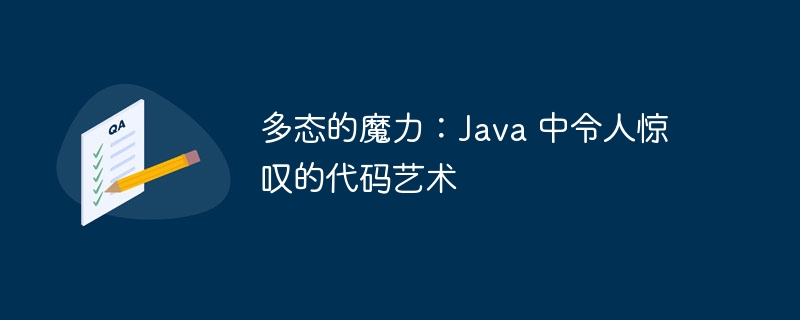

php editor Xiaoxin takes you to explore "The Magic of Polymorphism: The Amazing Art of Code in Java". In Java programming, polymorphism is a powerful feature that allows different objects to respond differently to the same message, bringing greater flexibility and scalability to the code. Through the clever use of polymorphism, developers can create elegant, efficient, and stunning works of code art, injecting endless magic into Java programming.
When a polymorphic method is called, the compiler determines which method to execute based on the actual type of the object. This is called dynamic binding. Dynamic binding allows you to write generic code that works on different objects without knowing the specific type of the object.
The following is a simple code example demonstrating polymorphism:
class Animal {
public void eat() {
System.out.println("Animal is eating");
}
}
class Dog extends Animal {
@Override
public void eat() {
System.out.println("Dog is eating");
}
}
class Cat extends Animal {
@Override
public void eat() {
System.out.println("Cat is eating");
}
}
public class Main {
public static void main(String[] args) {
Animal animal = new Dog();
animal.eat(); // Prints "Dog is eating"
animal = new Cat();
animal.eat(); // Prints "Cat is eating"
}
}In this example, the Animal class is a parent class, and the Dog class and Cat class are subclasses. The Animal class defines a method called eat(), and both the Dog and Cat classes override this method to provide their own implementations.
In the main() method, we create a reference to the Animal object and point it to a Dog object. Then, we call the eat() method and the compiler determines which method to execute based on the actual type of the object (Dog), so it prints "Dog is eating". Similarly, when we point the reference of the Animal object to a Cat object and call the eat() method, the compiler will determine which method to execute based on the actual type of the object (Cat), so it will print "Cat is eating" .
Polymorphism is a very powerful feature in Java that can make your code more flexible and extensible. By understanding and using polymorphism, you can write more powerful and versatile programs.
Polymorphism in Java is a double-edged sword. If used well, it can make your code more flexible and scalable. If used poorly, it may lead to confusing and difficult-to-understand code. Therefore, be careful when using polymorphism and make sure you understand its principles and usage.
The above is the detailed content of The Magic of Polymorphism: The Amazing Art of Code in Java. For more information, please follow other related articles on the PHP Chinese website!
